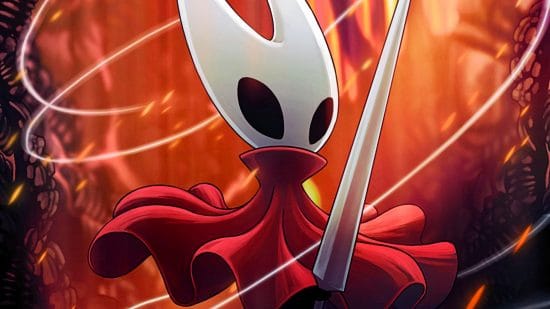The releaseof Hollow Knight in 2017 marks an important turning point for Metroidvanias, with Team Cherry’s indie hit and debut game practically reigniting a new era for the genre. Not long after Hollow Knight‘s launch, Team Cherry would begin the initial design and conceptualization of a larger-scale DLC for the game, which eventually ballooned into a fully-fledged sequel. Announced in 2019, Hollow Knight: Silksong is the official follow-up to one of the best modern Metroidvanias, which would see the game quickly rise to the top of the Steam charts as the storefront’s “Most Wishlisted” title. But here we are 5 years later, and Hollow Knight: Silksong is nowhere to be seen, with even the game’s official website lapsing its renewal date. Thankfully, there are plenty of other excellent Metroidvania titles to play while the wait for Hollow Knight: Silksong continues.
Though not all the games on this list are indie titles, indie developers seem to be piling up to repeat the success of Hollow Knight, resulting in a veritable flood of quality Metroidvanias from non-AAA studios. What’s more, there’s a staggering amount of variety to be found in the best Metroidvanias of the modern era, with developers taking exciting creative risks that continue to push the envelope in terms of what players expect from the genre. Like Hollow Knight, many of the best Metroidvania titles mix the standard elements of the genre with influences from other games (primarily FromSoftware’s Dark Souls) to introduce new amalgamations that earn their place alongside the all-time Metroidvania classics.
Death’s Gambit: Afterlife
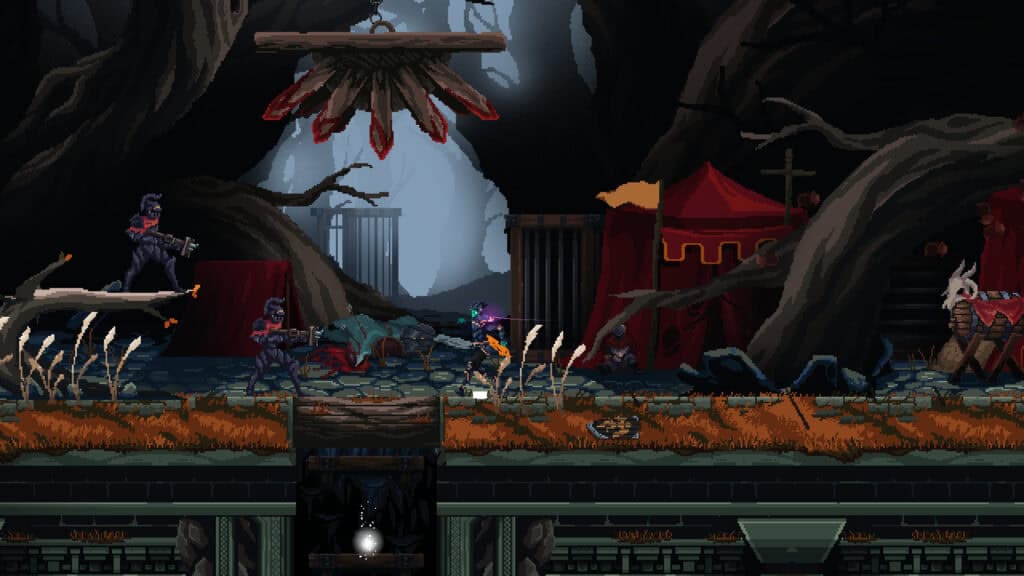
©Death's Gambit: Afterlife gameplay screenshot - Original
- Release Date — September 30, 2021
- Platforms — PC, PS4, Nintendo Switch, Xbox One
- Review Aggregate Score — 78% (Generally Favorable)
The initial launch of Death’s Gambit would prove to be a valuable learning experience for developer White Rabbit, with the overwhelmingly negative response to the 1.0 version resulting in the game going back in the oven. When Death’s Gambit finally re-emerged as Death’s Gambit: Afterlife a full 3 years later, it finally took the shape of the Soulslike/Metroidvania hybrid that the original release promised. Afterlife‘s gameplay is a showcase for all the elements that Metroidvania fans want to see in a new genre title — the map is massive and varied, there’s no shortage of distinct enemy types that each require different combat strategies, areas are gated by both progression and abilities, and there’s an impressive amount of build variety. Add to that an excellent story, and you have a legendary Metroidvania in the making.
Ghost Song
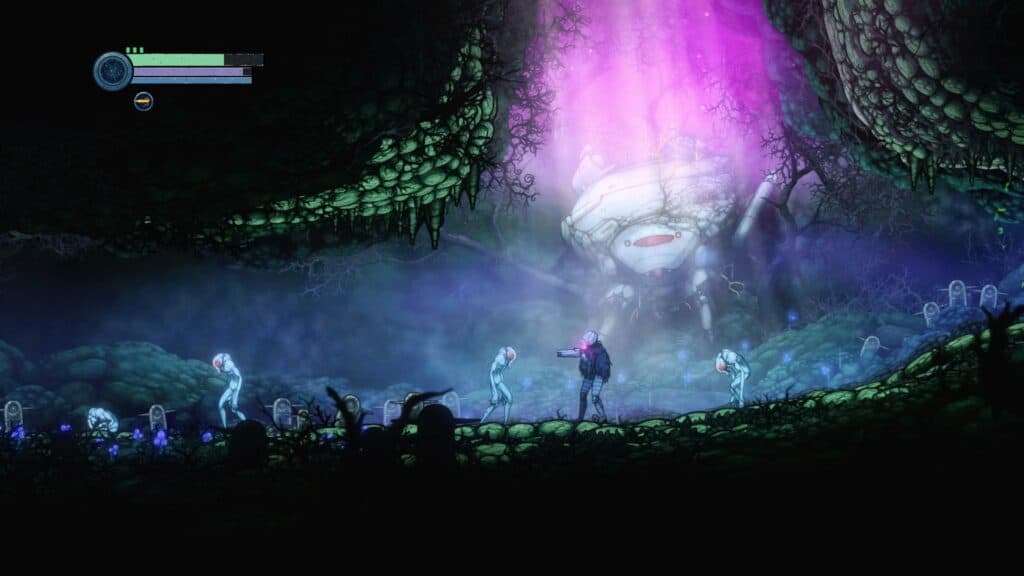
©Ghost Song gameplay screenshot - Original
- Release Date — November 3, 2022
- Platforms — PC, PS4, PS5, Nintendo Switch, Xbox One, Xbox Series X/S
- Review Aggregate Score — 79% (Generally Favorable)
If there’s one trend that Hollow Knight‘s success helped to inspire in the Metroidvania genre, it’s an emphasis on the melee-focused “Vania” half of the portmanteau rather than a clear line of inspiration from Nintendo’s Metroid series. One of the few modern Metroidvanias to buck that trend is the incredible Ghost Song, which wears its love for both Super Metroid and Hollow Knight proudly. Ghost Song features several collectible Modules that are its analog for Hollow Knight‘s Charms, and half the fun of a playthrough is challenging yourself to discover unique combinations that give rise to a preferred playstyle. Further, Metroidvania titles don’t typically place an emphasis on story despite being character-driven, which makes Ghost Song‘s thought-provoking NieR: Automata-inspired narrative so captivating.
Afterimage
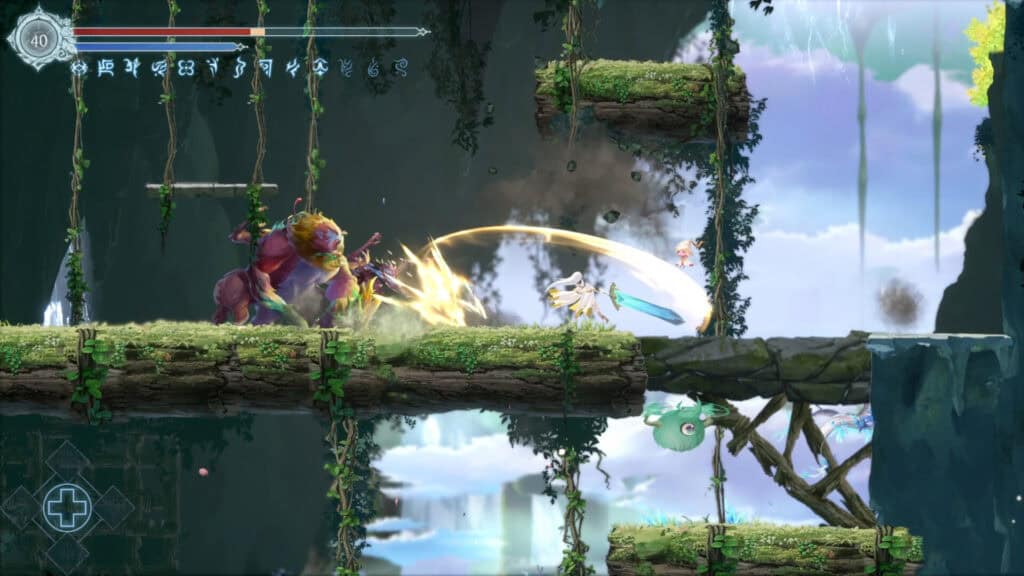
©Afterimage gameplay screenshot - Original
- Release Date — April 25, 2023
- Platforms — PC, PS4, PS5, Nintendo Switch, Xbox One, Xbox Series X/S
- Review Aggregate Score — 79% (Generally Favorable)
Afterimage may be one of the newer games on this list, but it’s already shaping up to be a title that deserves to be in the conversation of “Greatest modern Metroidvanias”. Though Afterimage places a much greater emphasis on story than most other Metroidvanias, that’s actually to its detriment considering that the story is barely cohesive and largely forgettable. No, Afterimage earns its place on this list thanks to its incredible combat and breathtaking visuals. There’s a surprisingly deep well of RPG systems and mechanics to work with in Afterimage, which blend nicely with the title’s character action-style gameplay and Soulslite elements. Afterimage‘s “Igavania” gameplay will be what gets players to stick around, but it’s almost impossible not to be drawn in by the game’s stunning hand-drawn art style.
F.I.S.T: Forged In Shadow Torch
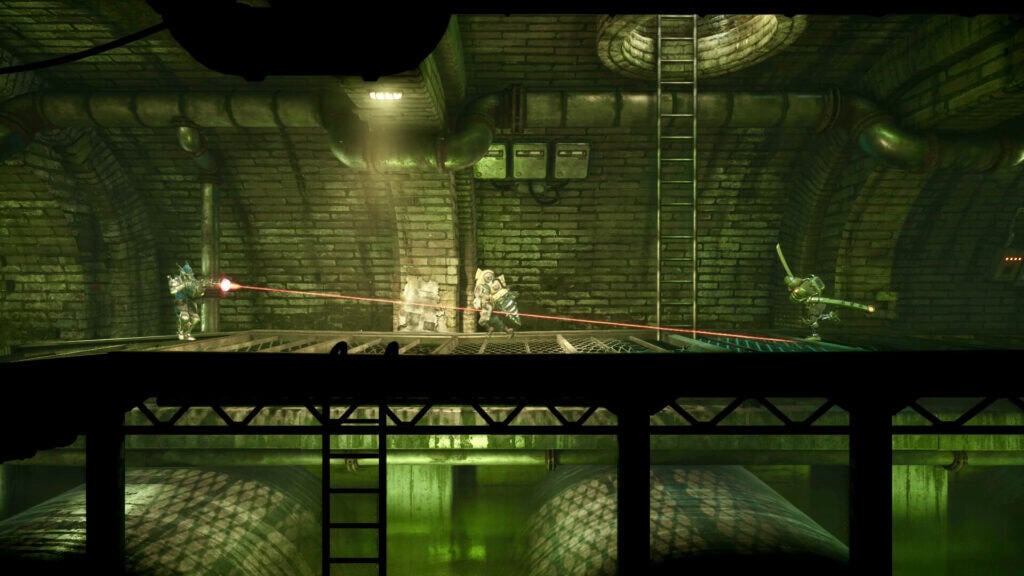
©F.I.S.T - Forged In Shadow Torch gameplay screenshot - Original
- Release Date — September 7, 2021
- Platforms — PC, PS4, PS5, Nintendo Switch, Xbox Series X/S
- Review Aggregate Score — 80% (Generally Favorable)
One of the few melee-focused Metroidvanias, F.I.S.T: Forged in Shadow Torch also happens to have a novel setup. Players take on the role of an anthropomorphic rabbit in a dystopian dieselpunk future populated by other anthropomorphic animals in order to fight against a megacorporation attempting to silence the population and forcefully quell dissent. To accomplish that mission, you’ll control the main character as he punches and drills everything in his path with the power of a robotic arm. Combat in F.I.S.T is undeniably the star of the show, with the game’s traversal, collectibles, and puzzle-solving amounting to pretty standard fare for a Metroidvania by comparison. But, like other melee-focused Metroidvania titles, when F.I.S.T‘s combo-heavy combat clicks, few games in the genre are as satisfying.
Ultros
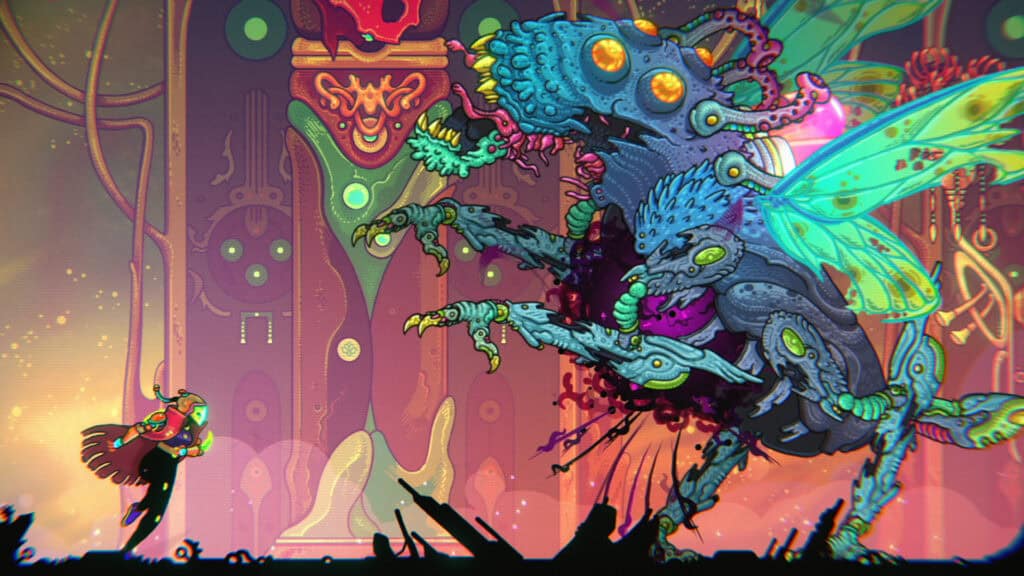
©Ultros gameplay screenshot - Original
- Release Date — February 13, 2024
- Platforms — PC, PS4, PS5
- Review Aggregate Score — 81% (Generally Favorable)
It’s almost impossible to ignore Ultros thanks to its signature hallucinogenic visuals and vibrant color palette. Even if you’re not a fan of Metroidvanias, there’s something appealing about Ultros based purely on its eye-catching art style. Thankfully for genre fans, though, Ultros does manage to be an excellent Metroidvania and an impressive first effort for developer Hadoque. The game incorporates some roguelite elements into how it handles the methodical progression through its strange world, but it’s nowhere near as pure a blend of Roguelike and Metroidvania as Dead Cells. Instead, the game routinely rewards meaningful meta progression that makes each successive run just a bit easier, using procedural generation in certain areas to keep players on their toes and make the most of the game’s mind-bending visuals.
Grime
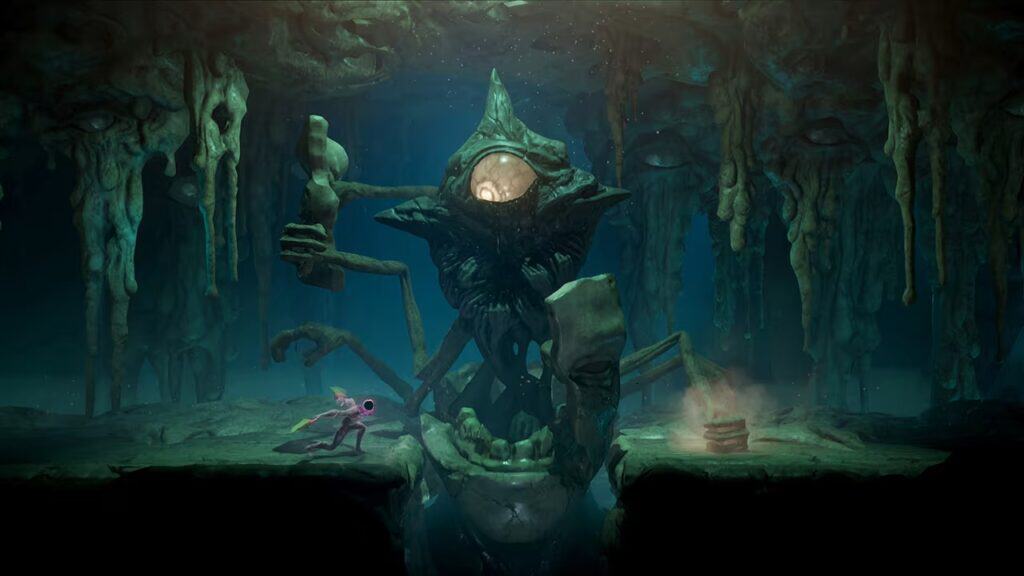
©Grime gameplay screenshot - Original
- Release Date — August 2, 2021
- Platforms — PC, PS4, PS5, Nintendo Switch, Xbox One, Xbox Series X/S
- Review Aggregate Score — 81% (Generally Favorable)
In terms of Metroidvanias that straddle the line between being pure genre experiences and 2D Soulslikes, perhaps no other game comes as close as Grime. Few games in the Metroidvania genre owe as great a debt of gratitude to Dark Souls as Grime, but the title also has more than its fair share of Super Metroid‘s DNA to complement its challenging and methodical combat. The setting, atmosphere, and art style of Grime definitively set it apart from most other modern Metroidvanias, regardless of its clear influences, and it’s surprising to see how much of an emphasis the game places on platforming. While most other “Soulsvania” titles tend to forego platforming challenges in favor of focusing on combat, Grime takes a page from Hollow Knight‘s book by subjecting players to both.
Record of Lodoss War: Deedlit in Wonder Labyrinth
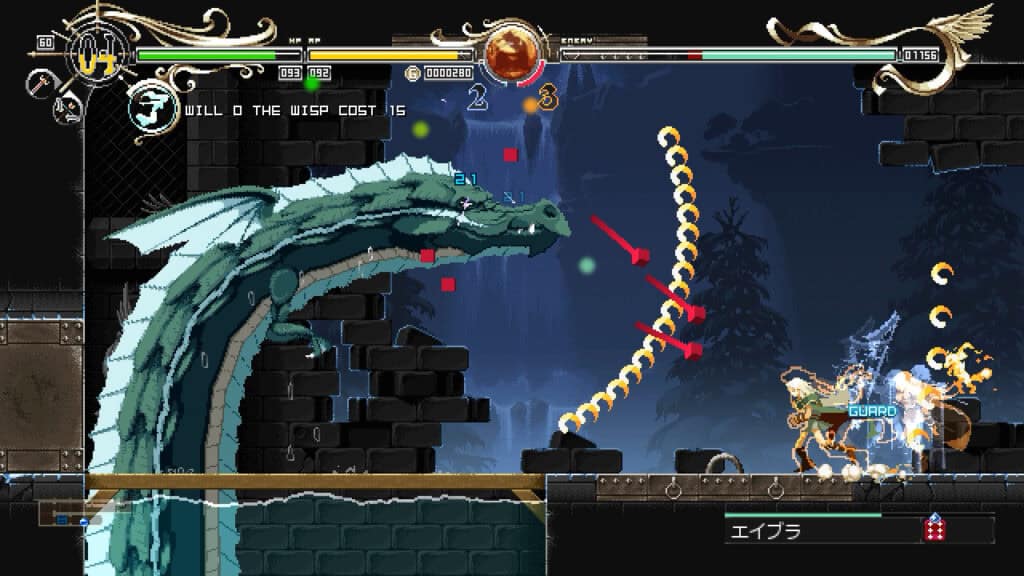
©Record of Lodoss War: Deedlit in Wonder Labyrinth gameplay screenshot - Original
- Release Date — December 16, 2021
- Platforms — PC, PS4, PS5, Nintendo Switch, Xbox One, Xbox Series X/S
- Review Aggregate Score — 83% (Generally Favorable)
While Hollow Knight and its sequel Hollow Knight: Silksong pay homage to the Metroidvania and Soulslike genres, few titles are as unabashedly in debt to Castlevania: Symphony of the Night as Record of Lodoss War: Deedlit in Wonder Labyrinth. This 2D, side-scrolling ARPG pays clear homage to Symphony of the Night and the slew of “Igavanias” that would come to define the Castlevania series after it, right down to its beautifully-rendered pixel art visuals and gigantic, screen-hogging boss enemies. Where Deedlit throws players a welcome curveball, though, is in its fire and ice-elemental swapping for puzzle-solving and encounters, which dramatically opens up the combat playbook when utilized effectively.
Blasphemous II
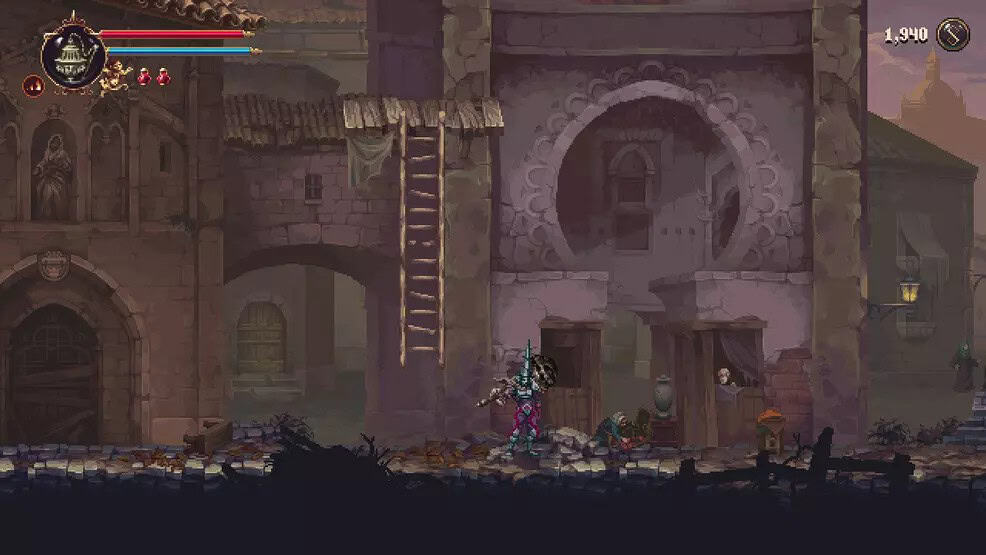
©Blasphemous II gameplay screenshot - Original
- Release Date — August 24, 2023
- Platforms — PC, PS4, PS5, Nintendo Switch, Xbox One, Xbox Series X/S
- Review Aggregate Score — 84% (Generally Favorable)
Both Blasphemous and Blasphemous II are two excellent modern Metroidvania titles that are doing a great job of easing the wait for Hollow Knight: Silksong, especially with how they each offer some of the most challenging combat and platforming the genre has to offer. Blasphemous II ekes out a slight win, though, thanks to its smoother controls and a wider variety of offensive options, with players having not one but three main weapons to choose from that each open up different progression paths and can be hot-swapped on the fly after unlocking them. Like the first Blasphemous, Blasphemous II’s beautifully desolate environments and unforgettable enemy and boss designs add a grotesque charm to the game that helps it stand out from genre contemporaries.
Ender Lilies: Quietus of the Knights
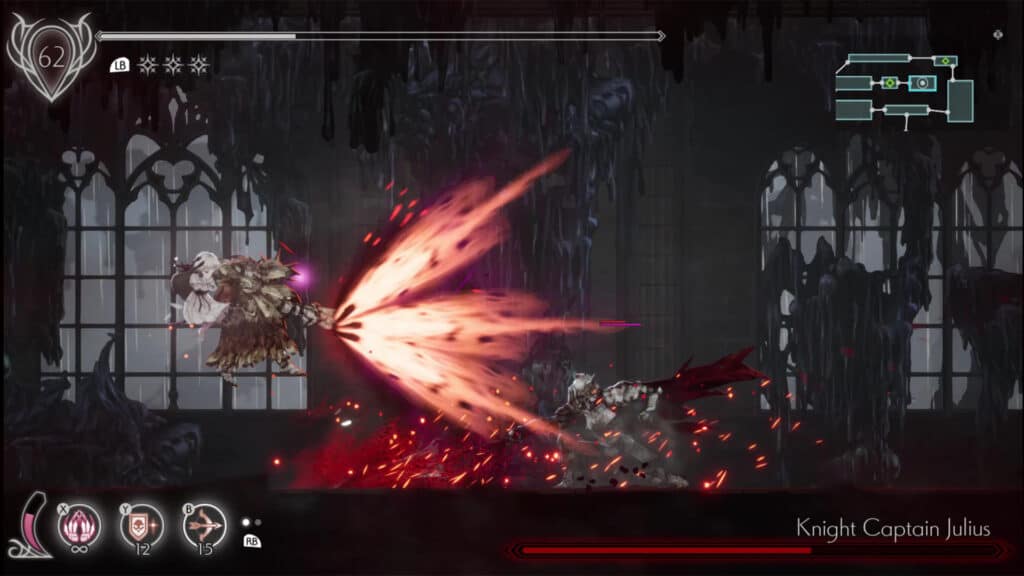
©Ender Lilies: Quietus of the Knights gameplay screenshot - Original
- Release Date — June 22, 2021
- Platforms — PC, PS4, PS5, Nintendo Switch, Xbox One, Xbox Series X/S
- Review Aggregate Score — 86% (Generally Favorable)
Like Hollow Knight, Ender Lilies is a standout Metroidvania title that now has its own official sequel on the way, and it may end up arriving before players get their hands on Hollow Knight: Silksong (or even news about its release, for that matter). That said, it’s easy to see why the developer would want to continue this series, as the original game features some of the best combat and traversal in any modern Metroidvania along with a unique mechanic similar to the classic DS title Castlevania: Order of Ecclesia. Rather than wield armaments directly, the protagonist of Ender Lilies controls the spirits of warriors to do battle and is able to swap between them on the fly. With its phenomenal combat, beautiful art design, and excellent story, Ender Lilies is a must-play for Metroidvania fans.
Prince of Persia: The Lost Crown
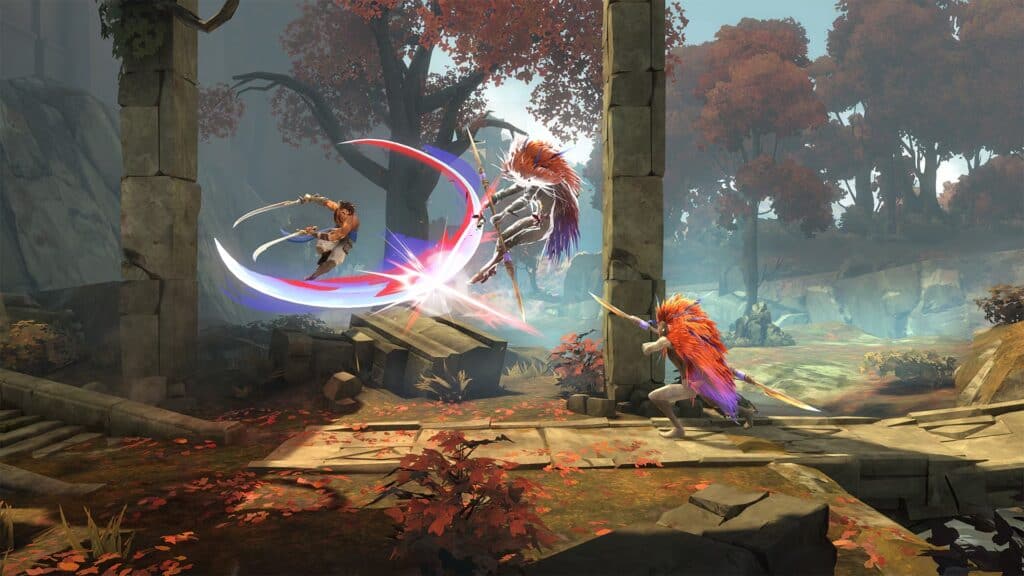
©Prince of Persia: The Lost Crown gameplay screenshot - Original
- Release Date — January 18, 2024
- Platforms — PC, PS4, PS5, Nintendo Switch, Xbox One, Xbox Series X/S
- Review Aggregate Score — 86% (Generally Favorable)
The backlash toward the reveal of Prince of Persia: The Lost Crown seems silly now in hindsight given that it’s one of the best-reviewed games of 2024 and one of the best AAA Metroidvanias in years. The Prince of Persia franchise has always centered around fast and fluid platforming challenges, so it’s a wonder that it took this long for the franchise to find its way into a Metroidvania title. Now that it has, The Lost Crown‘s excellent combat, traversal, and puzzle-solving practically beg for the series to continue receiving regular Metroidvania titles, and it’s amazing that the game can stand shoulder-to-shoulder with the most recent mainline Metroid title. Prince of Persia: The Lost Crown is a modern Metroidvania done right and will hopefully inspire other AAA developers to experiment with the genre.
Guacamelee! Super Turbo Championship Edition
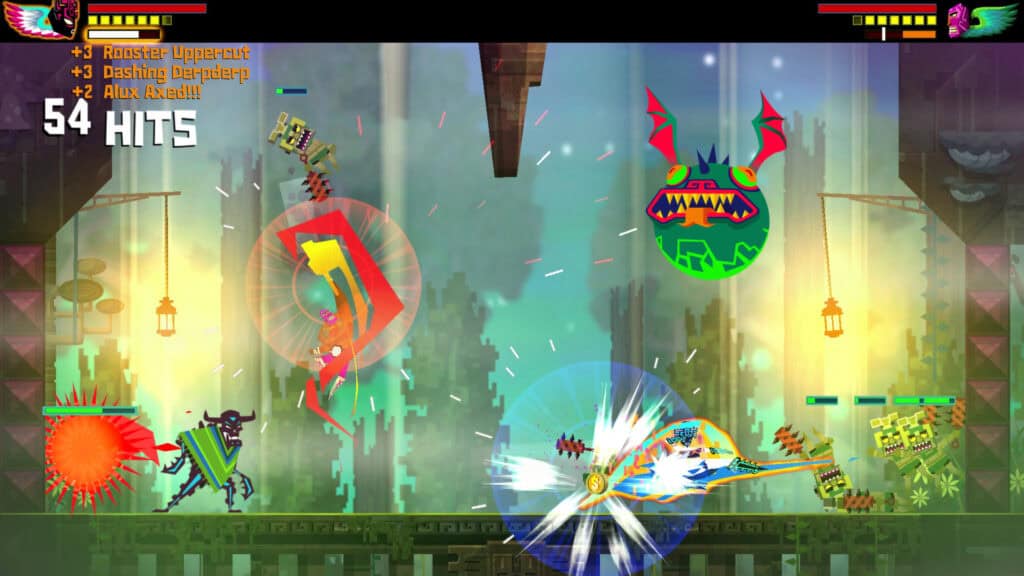
©Guacamelee! Super Turbo Championship Edition gameplay screenshot - Original
- Release Date — July 1, 2014
- Platforms — PC, PS4, Nintendo Switch, Wii U, Xbox One
- Review Aggregate Score — 87% (Generally Favorable)
There’s a strong argument to be made toward Guacamelee! being both the funniest and one of the most fun Metroidvania titles ever produced. Melee combat in Guacamelee! is both fast and fluid, but it’s also definitively weighty and makes great use of the game’s luchador protagonist to introduce some novel attacks and combos that can send enemies flying. But it’s the game’s willingness to not take itself too seriously that makes the title stand out among other Metroidvanias. After all, how many other games in the genre regularly make the main character transform into a chicken?
Metroid Dread
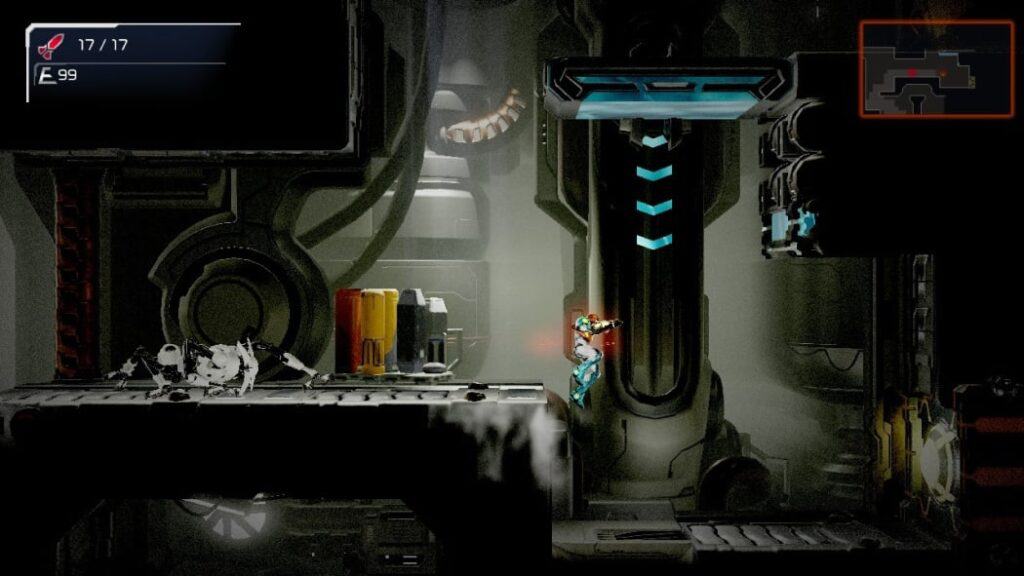
©Metroid Dread gameplay screenshot - Original
- Release Date — October 8, 2021
- Platforms — Nintendo Switch
- Review Aggregate Score — 88% (Generally Favorable)
Players may be waiting for Hollow Knight: Silksong for five years and counting, but no other Metroidvania title had as long a gestation period as Metroid Dread. The direct sequel to Metroid Fusion, Metroid Dread was originally conceptualized in the early 2000s before being shelved, and it would take almost 20 years for Nintendo to partner up with the right developer to deliver fans the 2D Metroid game they’d been clamoring for. It’s no small miracle that Metroid Dread ended up being as good as it is, but with a talented studio like Mercury Steam at the helm (who also developed the excellent Metroid: Samus Returns), it was clear the game was in good hands. Like Metroid Fusion before it, Metroid Dread is a crucial game in the series that mixes the tried-and-true Super Metroid formula with survival-horror elements to great effect.
Ori and the Blind Forest
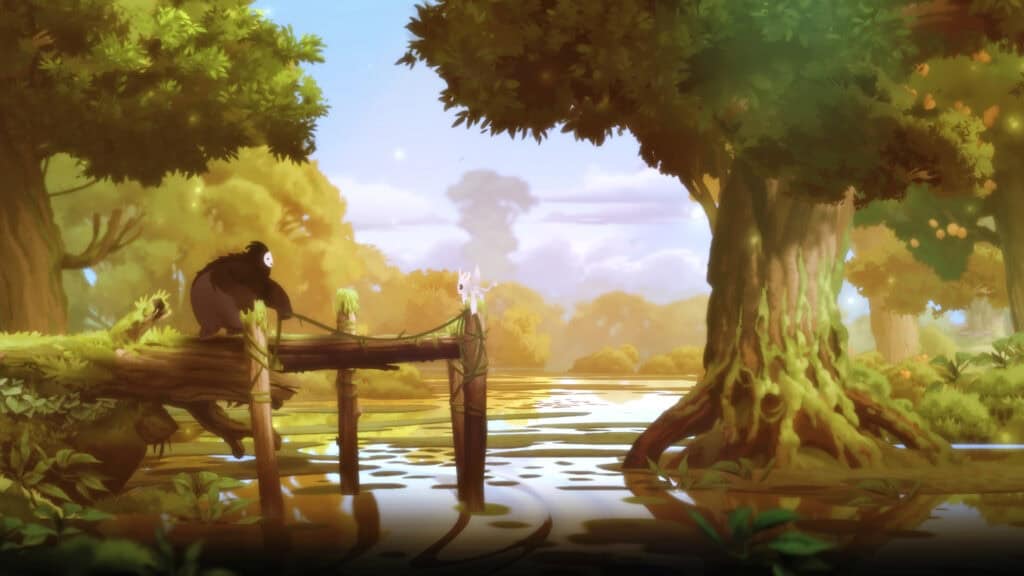
©Ori and the Blind Forest gameplay screenshot - Original
- Release Date — March 11, 2015
- Platforms — PC, Nintendo Switch, Xbox One
- Review Aggregate Score — 89% (Generally Favorable)
The opening to Ori and the Blind Forest is a heartbreaking tale of love and loss that successfully connects players to the beautiful Metroidvania and its captivating world. It’s remarkable, then, that the game only continues to get better from there, delivering what is one of the finest modern Metroidvanias while somehow remaining almost completely devoid of any real combat. The focus of Ori and the Blind Forest is its beautiful, dream-like world and the many platforming challenges that players will have to overcome to thoroughly explore it. And when it’s platforming that feels as fluid and satisfying as it does in Ori, every one of those challenges is a welcome test of player skill.
Dead Cells
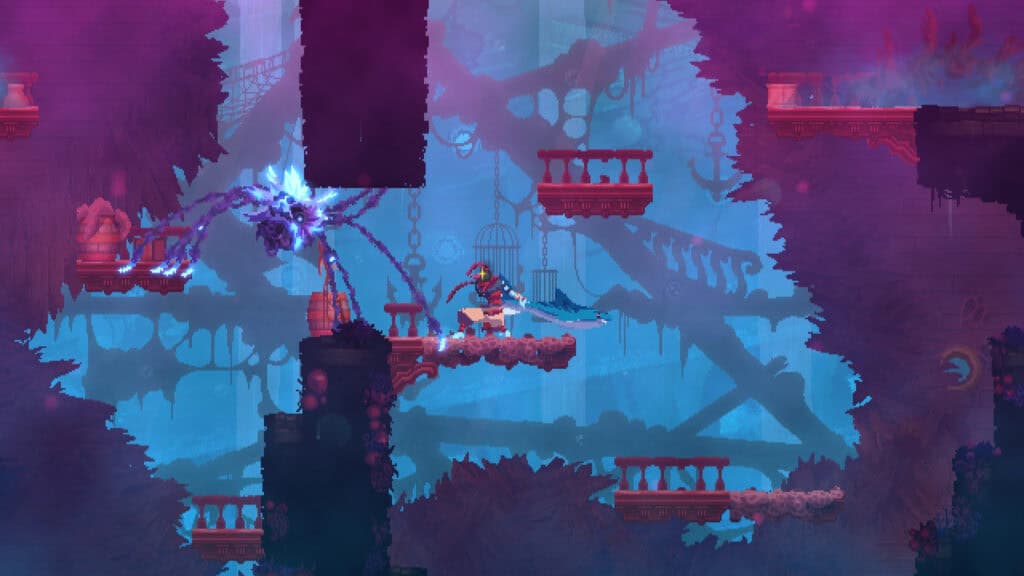
©Dead Cells gameplay screenshot - Original
- Release Date — August 7, 2018
- Platforms — PC, PS4, Nintendo Switch, Xbox One
- Review Aggregate Score — 89% (Generally Favorable)
The original Roguelike/Metroidvania hybrid, Dead Cells is one of the most impressive indie titles to arrive in the wake of Hollow Knight and one of the few to experience similar levels of critical and commercial success. Playing the game makes it easy to see why, as the Roguelike genre is a perfect framework for a fast-paced Metroidvania with plenty of collectible gear and build diversity. Beyond that, though, Dead Cells continues to endear itself to fans thanks to a commitment from the development team to support the title through regular balance adjustments, content updates, and thematically appropriate crossovers. Official support for Dead Cells may be over, but there are still hundreds of hours of playtime ready and waiting for anyone who has yet to get into the title.
Ori and the Will of the Wisps
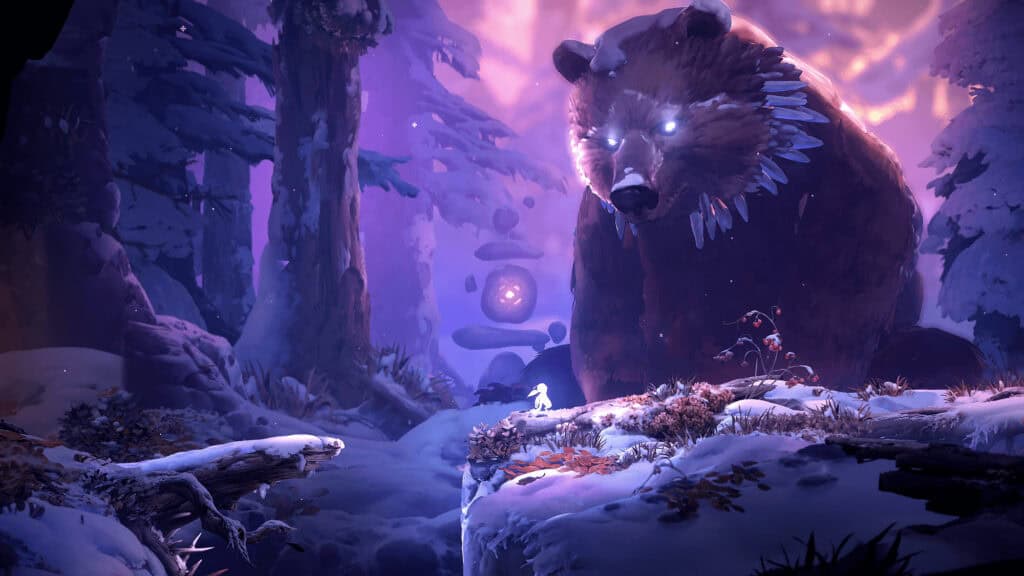
©Ori and the Will of the Wisps gameplay screenshot - Original
- Release Date — March 11, 2020
- Platforms — PC, Nintendo Switch, Xbox One, Xbox Series X/S
- Review Aggregate Score — 90% (Universal Acclaim)
Not only is Ori and the Will of the Wisps one of the most beautiful Metroidvania titles, but it’s also a great example of how to follow up a critically acclaimed game that Hollow Knight: Silksong can take more than a few notes. There’s still a lot of Blind Forest’s DNA present in the second Ori title, but Will of the Wisps introduces new evolutions to both the platforming and combat mechanics that immediately make it stand out as the better title of the two. Topping Blind Forest’s breathtaking setpiece moments and emotionally charged story was always going to be a tall order, but Will of the Wisps proves that Moon Studios were more than up to the challenge and are a developer that clearly understands how to make a quality Metroidvania.
Classic Metroidvanias
Castlevania: Aria of Sorrow
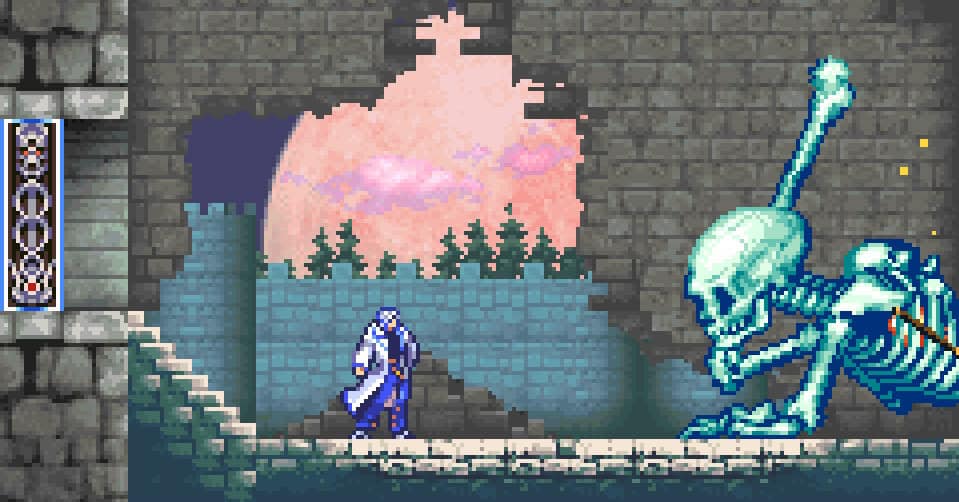
©Castlevania: Aria of Sorrow gameplay screenshot - Original
- Release Date — May 6, 2003
- Platforms — Game Boy Advance (Available via Castlevania Advance Collection on PC, PS4/PS5, Xbox One, Xbox Series X/S, and Nintendo Switch)
- Review Aggregate Score — 91% (Universal Acclaim)
The only other “Igavania” title in the Castlevania series to come close to reaching (or even surpassing) Symphony of the Night‘s greatness is the last series entry on the Game Boy Advance, Castlevania: Aria of Sorrow. Where Circle of the Moon and Harmony of Dissonance are both great games that follow Symphony‘s lead, Aria of Sorrow is the first game since that 1997 classic to truly push the envelope and introduce mechanics that help it stand out as one of the best games in the series. Soma’s ability to harness the souls of enemies for his own use gives the game a Pokemon-style directive to “catch them all”, mixing and matching abilities in various combinations to potentially break the game and trivialize even the most challenging encounters.
Castlevania: Symphony of the Night
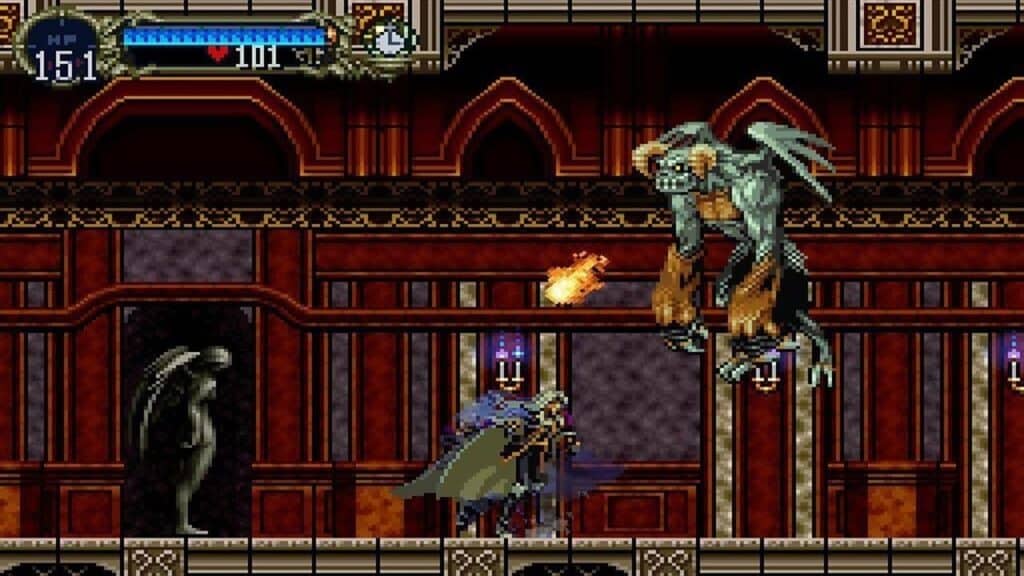
©Castlevania: Symphony of the Night gameplay screenshot - Original
- Release Date — March 20, 1997
- Platforms — PlayStation, Sega Saturn (Available via PSN as Castlevania Reqiuem)
- Review Aggregate Score — 93% (Universal Acclaim)
Along with Super Metroid, the game that inspired it, Castlevania: Symphony of the Night is the second half and “Vania” portion of the Metroidvania portmanteau. Unlike Super Metroid, though, Castlevania: SOTN places a greater emphasis on RPG-style leveling up and character progression, and it also features dozens of equipable weapons with their own stats and special abilities. In terms of games in the genre that blend the large, interconnected map and ability-gated progression of Metroid with the classic tenets of an action RPG, Castlevania: Symphony of the Night is both the first to do it and still one of the best to ever do it. Dracula’s Castle is one of the best Metroidvania maps across any title, with some of the most inventive biome diversity and a phenomenal iconic soundtrack accompanying each new area.
Metroid Fusion
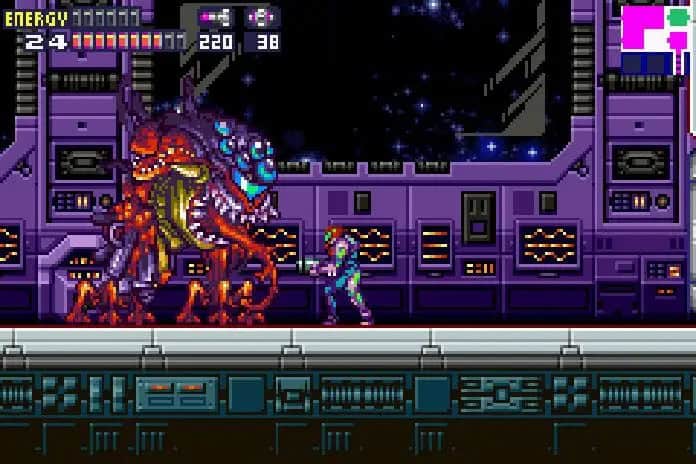
©Metroid Fusion gameplay screenshot - Original
- Release Date — November 17, 2002
- Platforms — Game Boy Advance (Available via Nintendo Switch Online)
- Review Aggregate Score — 92% (Universal Acclaim)
The true sequel to Super Metroid and the middle game between that legendary SNES title and Metroid Dread, Metroid Fusion is one of the unsung heroes of both its series and the Metroidvania genre. One of the most important elements of Metroid Fusion is its decidedly horror-leaning atmosphere and survival-horror elements, with stealth and avoidance of combat just as important in certain scenarios as clearing screens of enemies. The Game Boy Advance does a great job of making its limited button scheme (with 2 fewer face buttons than the SNES) work for controlling a Metroidvania, and the boss battles are some of the best in the entire Metroid franchise. Metroid Fusion is reason enough to fork over the extra cash for Nintendo Switch Online’s Expansion Pack subscription tier.
Super Metroid
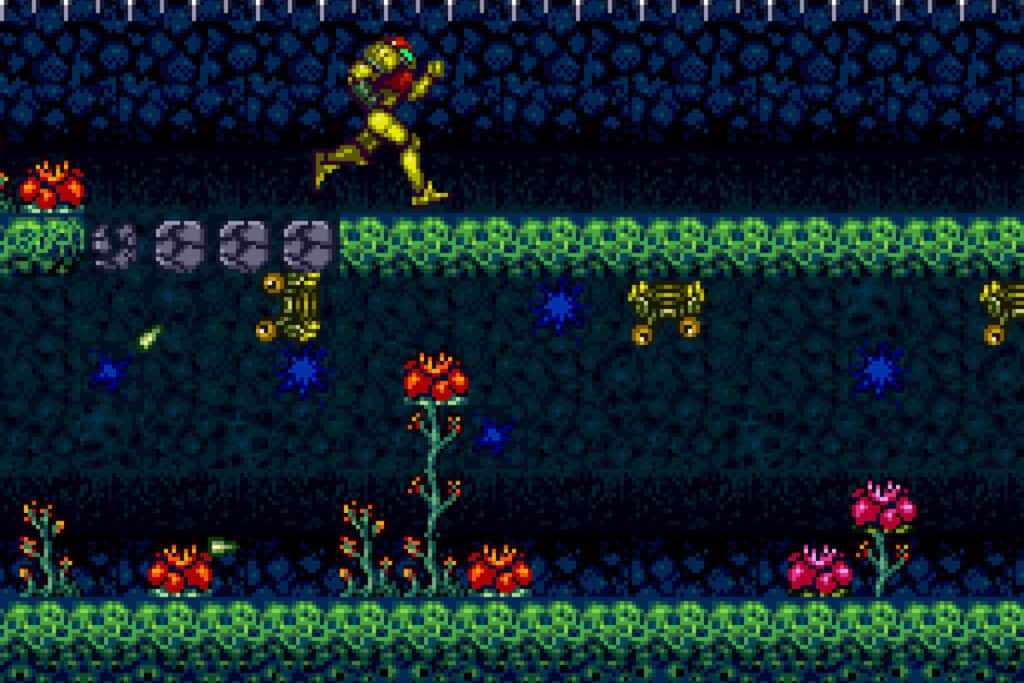
©Super Metroid gameplay screenshot - Original
- Release Date — April 18, 1994
- Platforms — SNES (Available via Nintendo Switch Online)
- Review Aggregate Score — 97% (Universal Acclaim)
Why wait for Hollow Knight: Silksong to come out when the greatest Metroidvania title of all time is readily available on Nintendo Switch Online? Long considered to be the first “true” game in the Metroidvania genre and the inspiration for the portmanteau’s other half (Castlevania: Symphony of the Night), Super Metroid is about as close as players can get to a perfect action-platformer and it also simultaneously establishes the Metroidvania genre conventions. All the elements that players expect in a Metroidvania only are expected because of their presence in Super Metroid, and the game’s drip-feeding of abilities and equipment results in the title being one of the more perfectly-paced Metroidvania titles — a bar that just about every game in the genre is still trying to reach.
The image featured at the top of this post is ©Hollow Knight: Silksong key art.
